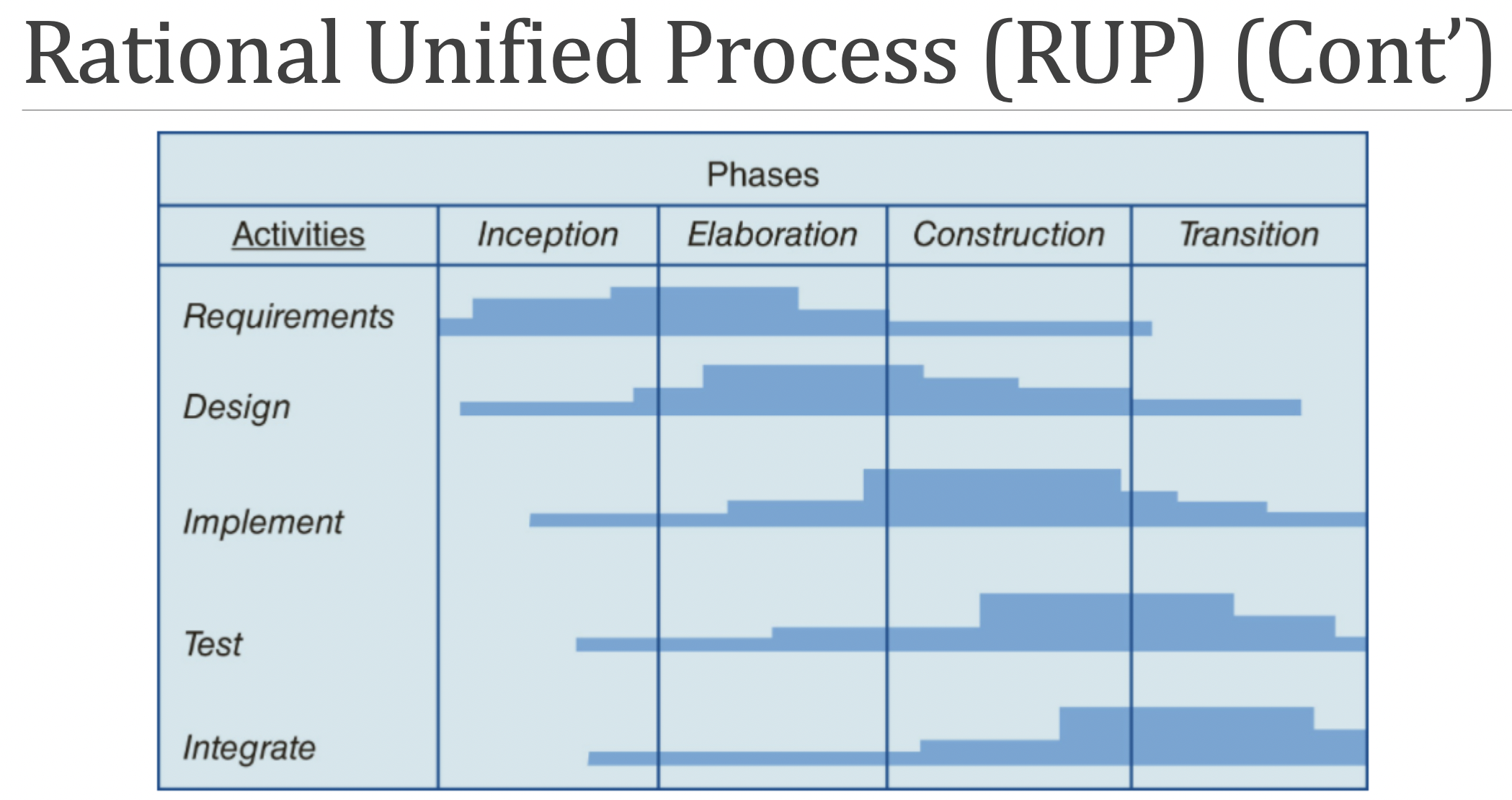Rational Unified Process (RUP)
RUP has incorporated earlier experiences from the incremental and iterative process model and the spiral model.
RUP is rooted in the Unified Modeling Language (UML)
• UML: An object-oriented modeling language that provides the elements and relationships to model software requirements and design.
The RUP framework is driven by three major concepts
1. Use-case and requirements driven: Use cases are used to capture requirements.
2. Architecture centric: Describes the static and the dynamic aspects of the overall system.
3. Iterative and incremental: Promotes large software to be developed in smaller pieces or increments.

❑ Inception Phase
1. Inception is a planning phase
2. Establish the score and clarify the goals of the software project
3. Establish the critical use cases and the major scenarios that will drive the architecture and design
4. Establish some architecture and early design alternatives
5. Estimate the schedule and required resources
6. Plan the implementation, integration, and configuration methodologies
7. Estimate the potential risks
❑ Elaboration Phase
1. The most critical phase of the RUP
2. Establish all the major and critical requirements for the system
3. Establish and demonstrate the baseline design
4. Establish the implementation, test, and integration platforms and methods
5. Establish the major test scenarios
6. Establish the measurement and metrics for the agreed on goals
7. Organize and set up all the needed resources for implementation, testing, and integration.
❑ Construction Phase
1. At the end of this phase, the code for the software should be complete and all the major
requirements tested.
2. Complete the implementation in a timely manner within estimated cost.
3. Achieve the version of the code that is releasable to a restricted set of Alpha test sites.
4. Establish the remaining activities that need to be completed to achieve the goals of the project.
❑ Transition Phase
1. All the fixes and components are integrated
2. Establish the final software product for general release.
3. Establish user readiness and acceptance of the software
4. Establish support readiness
5. Gain concurrence for release and deployment

Prior learnings from the spiral model and the incremental and iterative process model have been incorporated into RUP.
https://velog.io/@kakasi18/SDLCModelRUPretro bowl